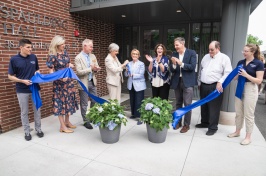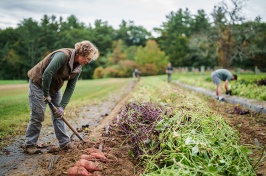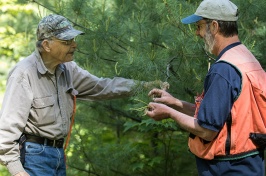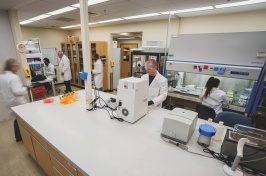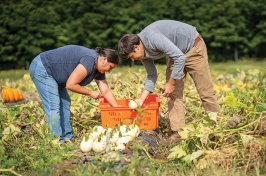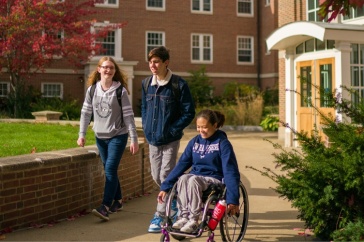Nearly 35 percent of rural counties in the United States are experiencing protracted and significant population loss, according to new research from the New Hampshire Agricultural Experiment Station at the University of New Hampshire. Those counties now are home to 6.2 million residents, a third fewer than lived there in 1950.
In all, the researchers found that 746 counties representing 24 percent of all U.S. counties are depopulating and 91 percent of them are rural. In contrast, just nine percent of urban counties are depopulating.
The research was conducted by Kenneth Johnson, researcher with the NH Agricultural Experiment Station, senior demographer at Carsey School of Public Policy, and professor of sociology, and Daniel Lichter, a policy fellow at Carsey.
“Population loss from outmigration is the most important factor in the initial stages of depopulation,” the researchers said. “These depopulating rural counties had an average migration loss of 43 percent of their 20-to-24-year-olds in each decade from 1950 to 2010, and that chronic young adult outmigration means there were far fewer women of child-bearing age and, as a result, many fewer births. In addition, 60 percent of these counties had more deaths than births. This combination of young adult outmigration, fewer births and more deaths produced a downward spiral of population loss that will be difficult to break.”
Not all rural counties are depopulating. More than 35 percent of rural counties have experienced sustained growth for decades. Most growing counties are near metropolitan areas or centers for retirement and recreation. Yet, the researchers also found that even among the rural counties that were at their population peak in 2010, just 56 percent gained population between 2010 and 2016.
“That nearly half of the counties with long histories of population gain are now losing population underscores the demographic and economic headwinds that non-metropolitan America faces.” “This study provides a demographic window to the future and a sober forecast of continuing rural population decline in many economically depressed regions,” the researchers said. “Future rural population growth and decline clearly are deeply rooted in evolving patterns of migration, fertility and mortality. It is past time to refocus our attention on the rural people and places left behind.”
The research results are presented in the journal Rural Sociology in the article "Rural Depopulation: Growth and Decline Processes over the Past Century" (https://doi.org/10.1111/ruso.12266). The research also is available in the Carsey report: https://carsey.unh.edu/publication/ru....
This material is based upon work supported by the NH Agricultural Experiment Station, through joint funding of the National Institute of Food and Agriculture, U.S. Department of Agriculture, under award number 1013434, and the state of New Hampshire.
Founded in 1887, the NH Agricultural Experiment Station at the UNH College of Life Sciences and Agriculture is UNH’s original research center and an elemental component of New Hampshire's land-grant university heritage and mission. We steward federal and state funding, including support from the USDA National Institute of Food and Agriculture, to provide unbiased and objective research concerning diverse aspects of sustainable agriculture and foods, aquaculture, forest management, and related wildlife, natural resources and rural community topics. We maintain the Woodman and Kingman agronomy and horticultural research farms, the Macfarlane Research Greenhouses, the Fairchild Dairy Teaching and Research Center, and the Organic Dairy Research Farm. Additional properties also provide forage, forests and woodlands in direct support to research, teaching, and outreach.
-
Written By:
Lori Tyler Gula, PhD | NH Agricultural Experiment Station | lori.gula@unh.edu | 603-862-1452














